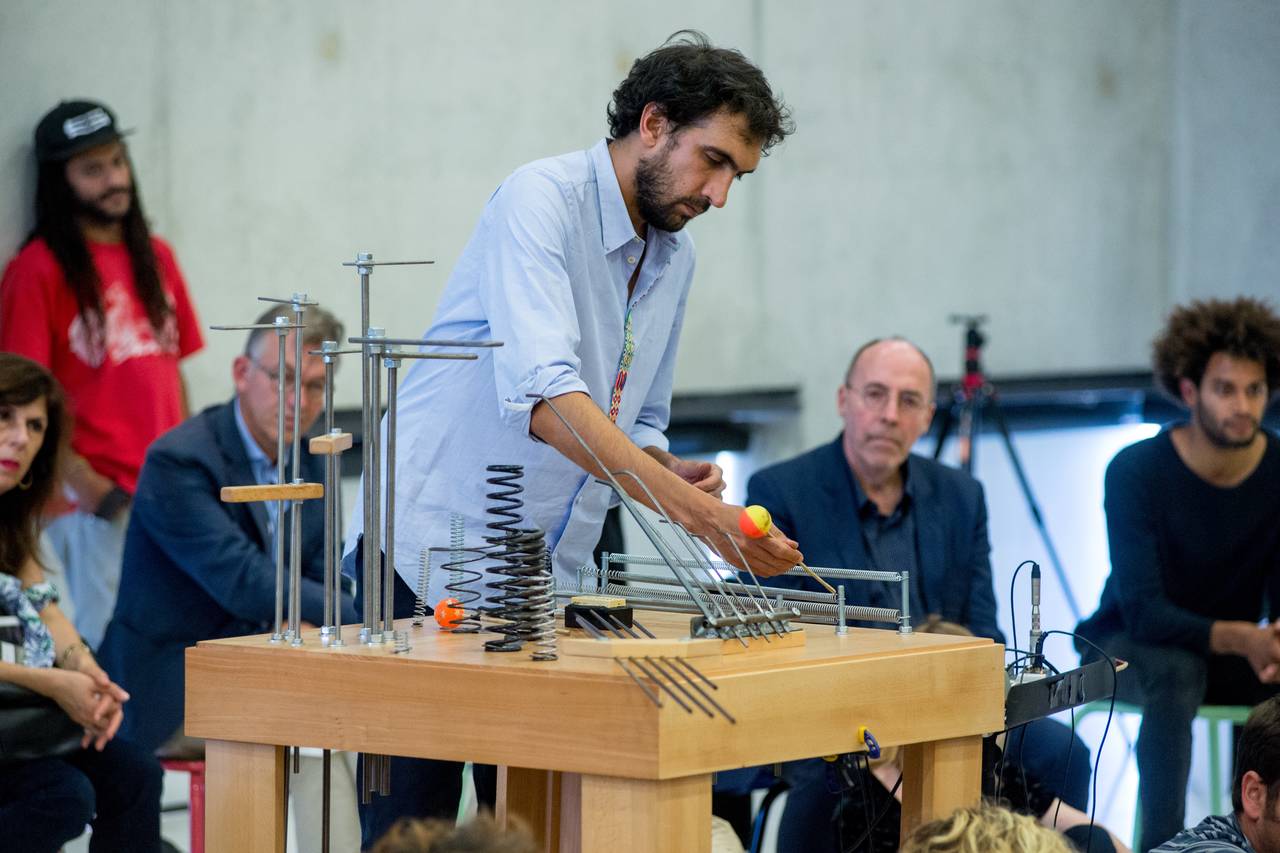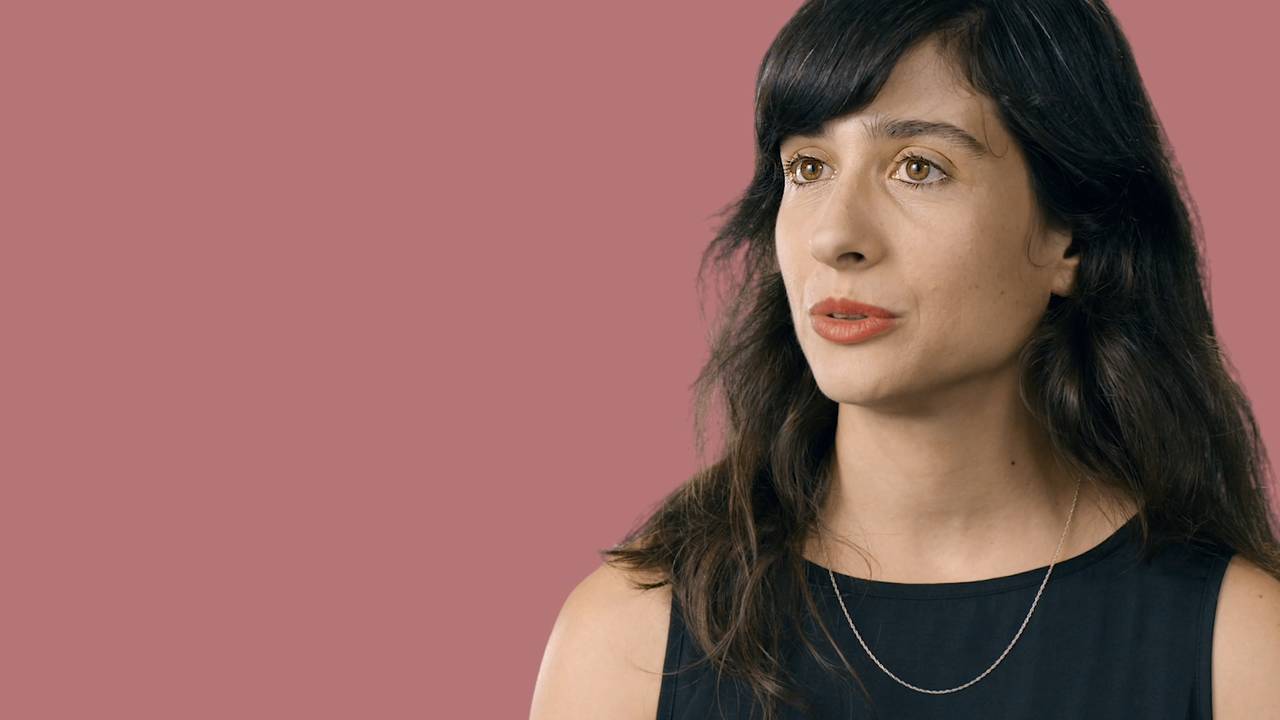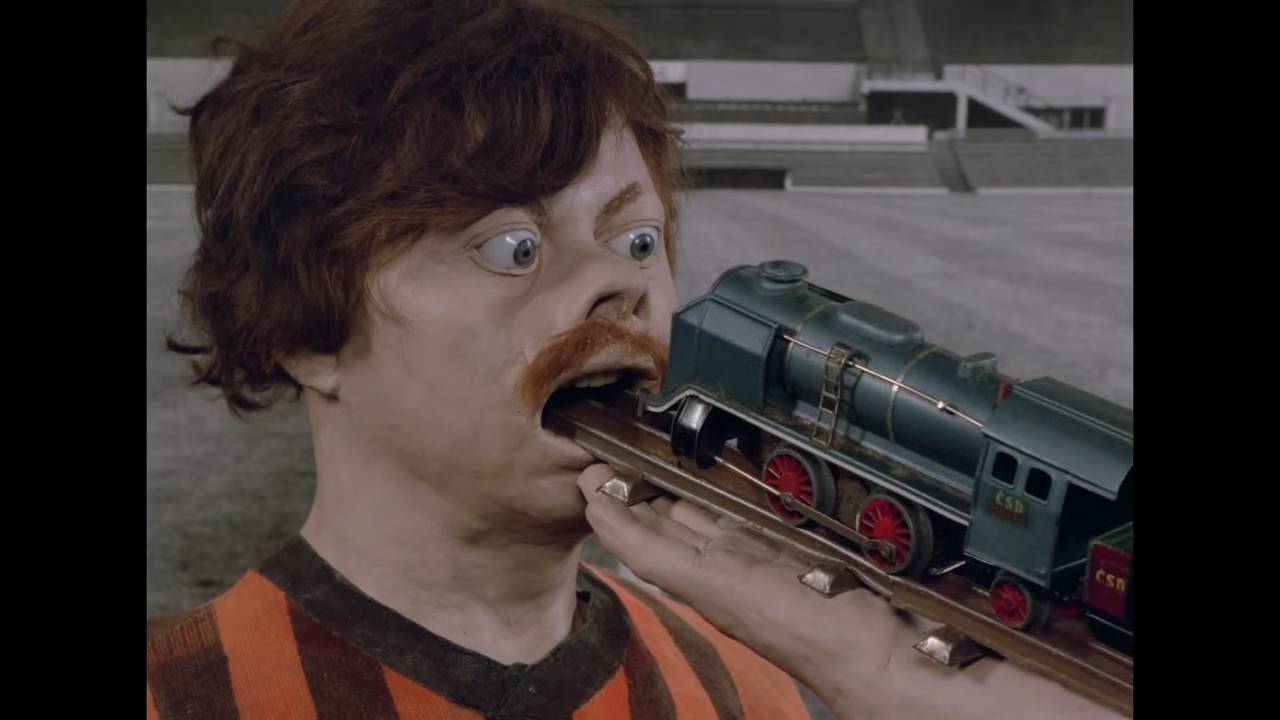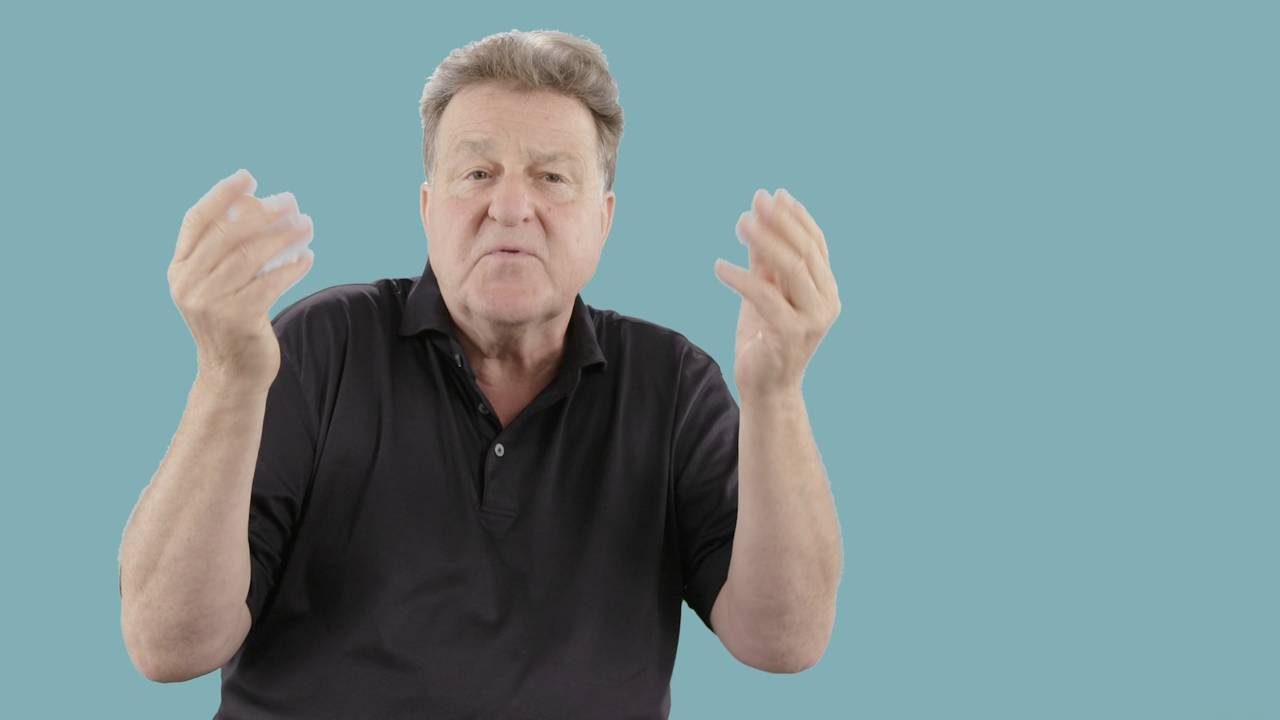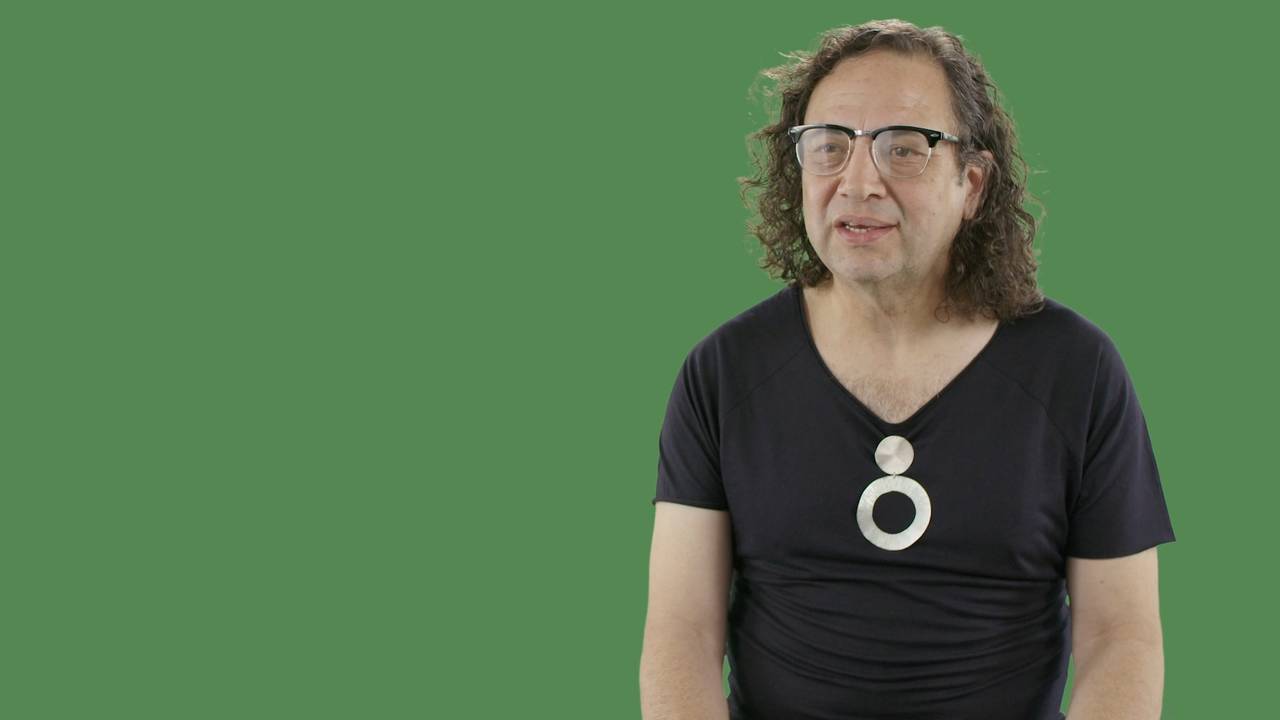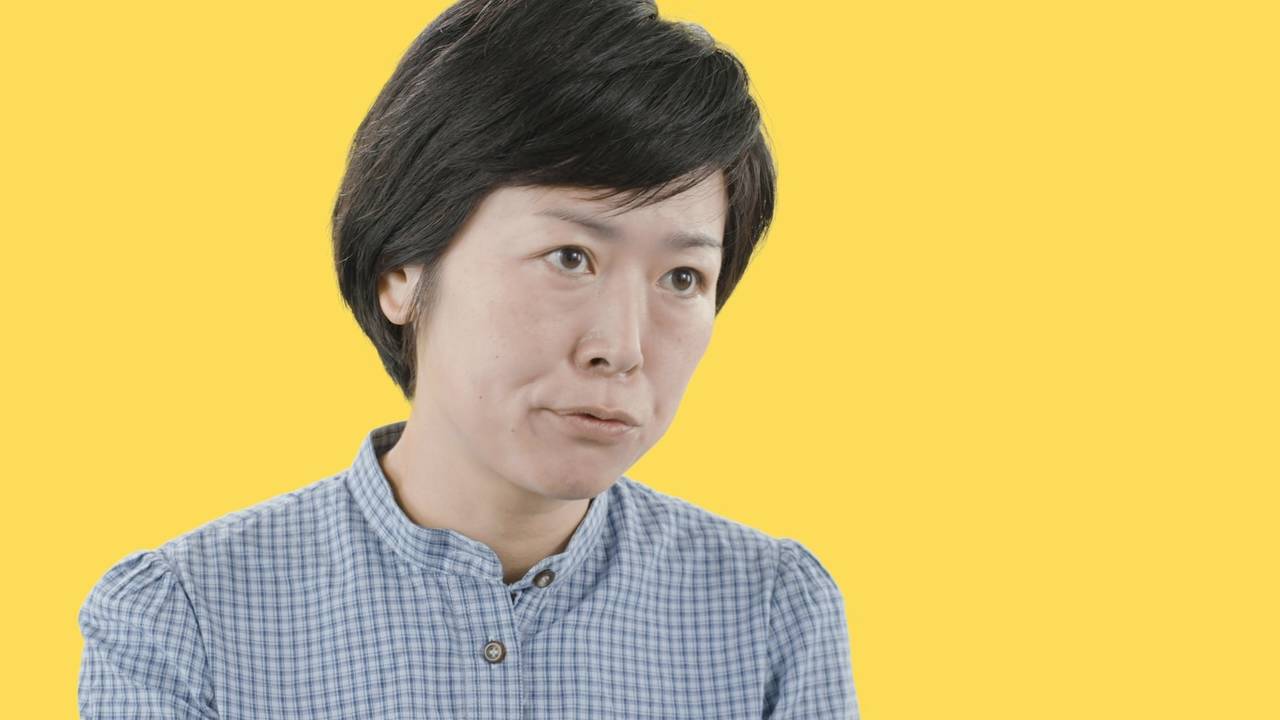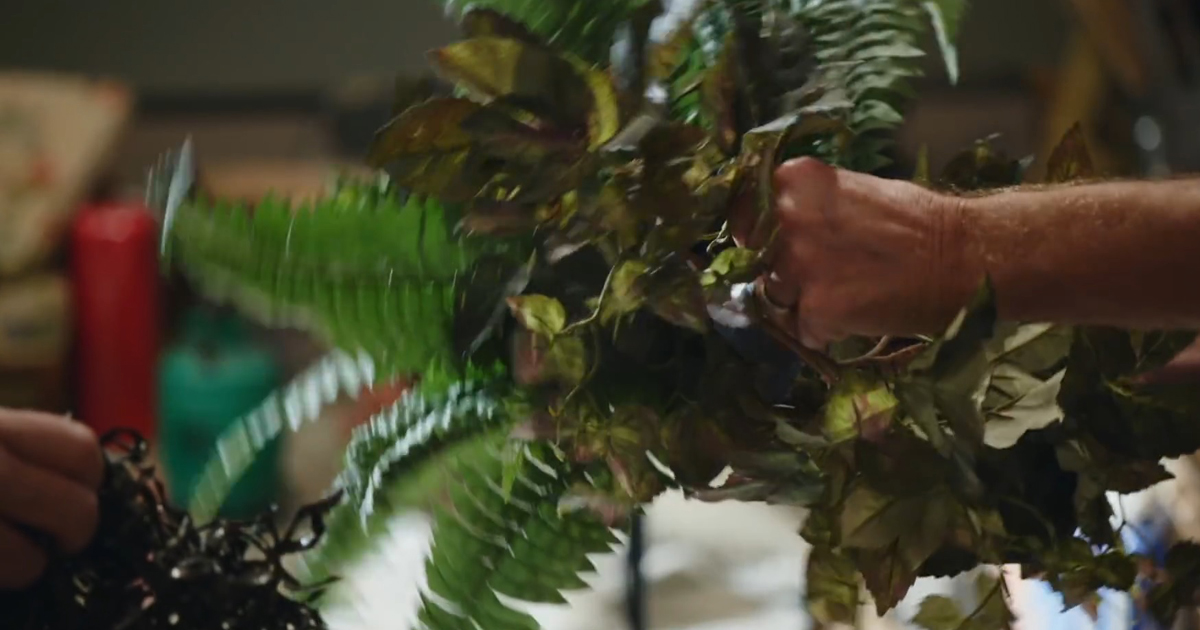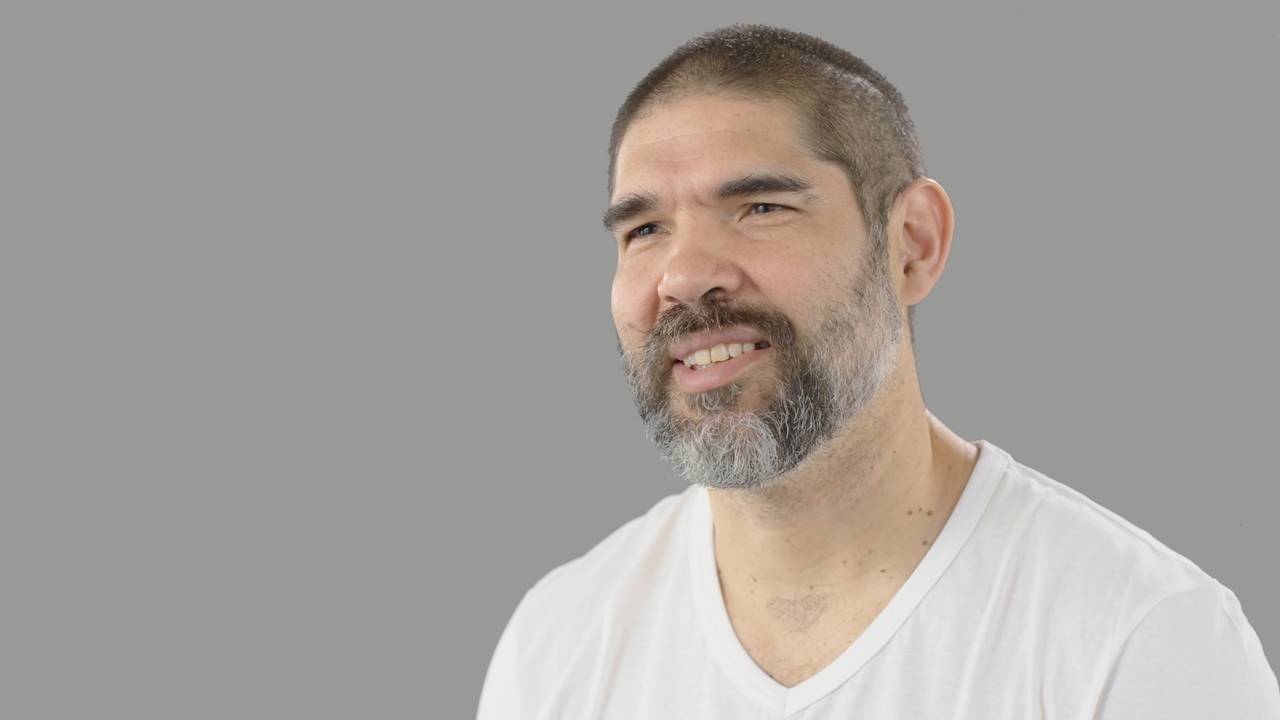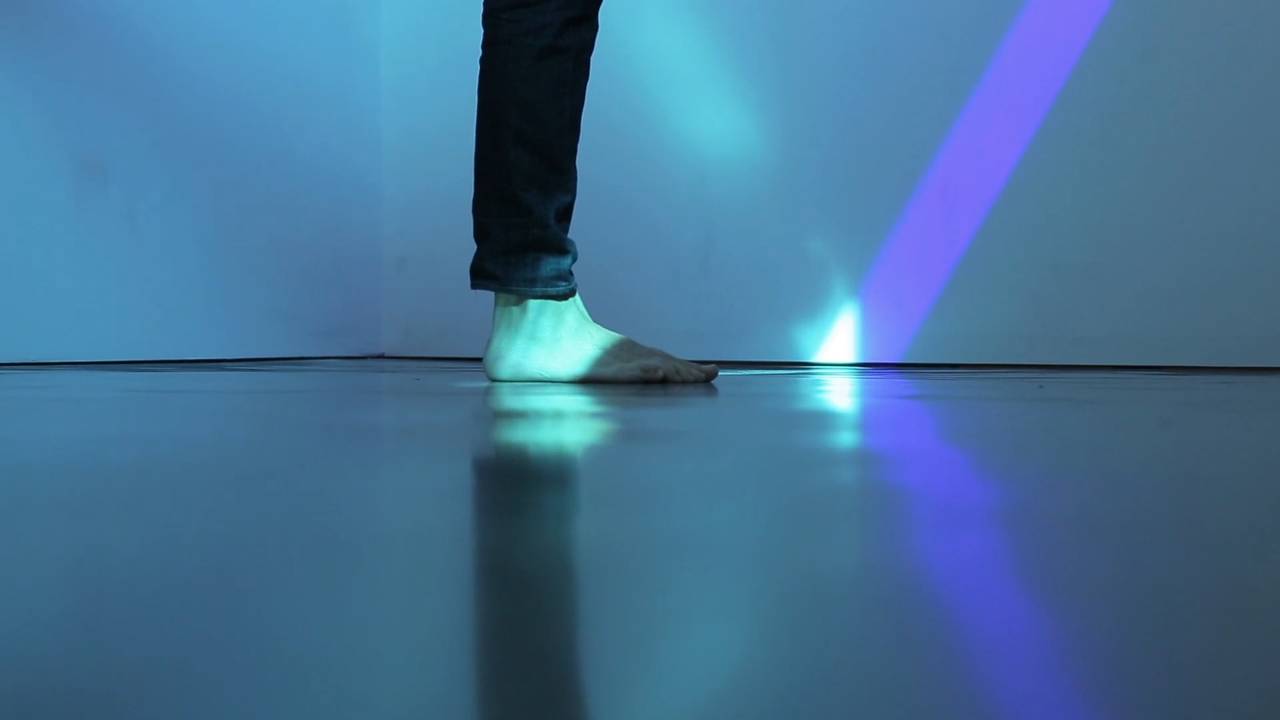Music was her first love, this is clearly noticeable in Naama Tsabar’s art. And New York the second. We visited her in Brooklyn and brought her elegant sculptures to life.
It’s a gray and drizzly afternoon in April when I arrive in Greenpoint, Brooklyn to meet sculptor and performance artist Naama Tsabar at her studio. The area is on the industrial side – with huge brick buildings and deserted sidewalks – and there is no one around to ask for directions. After Williamsburg and Bushwick, Greenpoint is one of the neighborhoods most sought-after by artists, since there are old factories with large, unobstructed spaces inside that are perfect for studios.
I have trouble finding the entrance and finally stop at the nearest street corner and call the artist. After the second ring she answers. “Just walk a little down the road and wait till you see me.” Just a few moments later an unmarked, black metal door swings open and Naama Tsabar steps out, dressed in the equally ubiquitous, but nonetheless stylish all-black attire of the New York art scene. She has a friendly smile and invites me in.
Hardly in New York, she was already on show in the famous Guggenheim
I follow her down a long narrow hallway, up two flights of stairs and into a woodwork shop – she shares the space with five other artists – and finally into her studio, consisting of two rooms: The first one is used for hanging and trying out her works – there are two large felt pieces on the wall – the second one for storage and as an office area. There are gutted amplifiers, goggles, wires, paint cans, all kinds of tools, a bike helmet, and pieces of rolled-up felt all neatly arranged in boxes labeled with self-made, bright blue tape tags. The stark neon lights and bright white walls give the rooms an almost chalky feeling. Interestingly it doesn’t feel cold.


Naama Tsabar was born in Tel-Aviv, Israel in 1982. She got her undergraduate degree from the Faculty of Arts – HaMidrasha in Israel and finally decided to move to the United States to do a Master of Fine Arts at Columbia University. “I came to New York in 2008. At that time, I was maybe four years out of undergrad. I’d exhibited a bit in Europe and in Israel, I kind of wanted to grow.”
After finishing her Master’s degree she decided to stay. “For me New York is a drug, you want it, you don’t want it, but you have to have it. It’s intense, it’s...” She sucks in her breath. “You know when I was in Israel the leap to come to New York and see everything you’ve heard about in real life was such an experience that I couldn’t go back to just looking at books.” Since then she has been exhibited and played her pieces internationally, with performances, among others, at the Palais de Tokyo in Paris, Kunsthaus Baselland in Switzerland, and New York City’s prestigious Guggenheim Museum. Naama Tsabar’s work mostly exists at the intersection of art and music: she creates sculptural pieces that can function as musical instruments. From broken guitars reconnected with strings over large felt mats sculpted with piano strings to amplifiers that are gutted and put back together on a canvas, ready to transport sound into a room (some of them even hum).
For me New York is a drug, you want it, you don’t want it, but you have to have it.

“I grew up playing classical and jazz piano and then, in my teens, I started playing guitar and all those years in Tel-Aviv I played in a band. When I was performing, I had this very physical experience of what it means to be on stage, what it means to be in front of an audience. I always say that music was my first love. It's the first way of creation that moved me and transported me to other places.” Most of the time, her pieces live a kind of double life.
Which is scary, nerve racking, and very rewarding – when it’s good.
They are elegant, minimal sculptures that Tsabar creates in her studio, but they can also be played, be brought to life through the process of composing a performance for the exhibition space. “I feel like I have both the control of the studio and the letting go of what happens in the actual space. Which is scary, nerve racking, and very rewarding – when it’s good.”
Every performance is made from scratch
“The first two or three days are all about play and improvisation. The musicians are in the space and I give them different exercises to guide them through different paths and movements, different capabilities of the work, and I film all that. I then go back through everything I filmed and edit out what’s successful. Then we look at the material and start patching things together. In a way that’s composed and everybody kind of knows what they’re doing in each segment, but within that a string can break, a note can go out of tune. It’s not as stable as a regular instrument.” And every performance is interpreted with local musicians who, most of the time, Tsabar hasn’t met before. “We have to have a lot of faith in each other and in the process. That’s also what makes it so magical and when it works, it’s just like beyond.”




There is something else that makes Naama Tsabar’s work stand out in the art scene. She made the very conscious decision to only work with female, female-defining, or gender non-conforming musicians. “There are so many amazing musicians and most of them are women,” she laughs. “I think those performers, creators often get overlooked because of their gender. So deciding to work only with female and gender non-conforming musicians doesn’t prevent me from having the most amazing musicians, but at the same time it is a strong political decision that I stand a hundred percent behind, because I’m a feminist and we all should be. I think there is an inequality in the creative and non-creative [world] that discriminates women, well anyone who is not a white man.”
She sits up straight in her chair and firmly places her feet on the ground. “That order needs to change and if we don’t take small, conscious steps it never will. This is just my way of taking steps towards that. I’d like to give a space and stage to those who are very capable, but don’t always get that stage.” At the BIG ORCHESTRA exhibition Tsabar shows one of her “Work on felt” pieces: large, monochrome felt mats that are combined with a piano string made to be played with a bow, drum sticks, or just bare hands.

“It all kind of started like an exercise. There is an organization that promotes Israeli art abroad. They wanted a work on paper from me. I have sketches, but I don't really do work on paper, I’m a sculptor, mostly. And when you go to art school and think about paper and sketches, you think about ‘the line’, right? The place it takes within the formal realm of the arts. I wanted to go back to that line but think about the paper and how that line can actually transform the paper. So, I came up with this technique where I embed another material inside the paper, but it still looks like paper. And with a guitar string, it was a small piece, I made one line that sculpted the paper and gave it a shape. Once that worked and you plucked the string it had a sound that kind of blew my mind. […] Then I dove deeper into the place of sound within the history of art of the 20th century and felt was just a very immediate material for me. Thinking of [Joseph] Beuys and the use of felt as a protector, as a heat source, something that absorbs. It’s such a strong material, but it’s also a material that is found in instruments. In pianos you have felt, in drums you have felt. It just clicked.”
When I ask about the hands-on part of the work, she seems genuinely delighted in my interest. Her gestures are sure and strong, it’s easy to tell that she is 100-percent confident in her practice. “In the ‘Works on felt’ I embed carbon fiber – you build these really light bicycles or pieces of airplanes from it – inside the felt. By embedding this material, I can still get the visual aspect of the felt. It still looked like felt but acted like another material and so in a way it was this visual lie.”
It’s such a strong material, but it’s also a material that is found in instruments. In pianos you have felt, in drums you have felt. It just clicked.

But the whole process of creating a piece out of felt starts, again, with paper. “I first make this kind of miniature which is just thick paper and thread. That’s how I get the shape. I play around until I find the form and then create it in carbon-fiber felt. The last step is plucking it to see what kind of note it is and that’s the one we need to work with. It starts from the form and moves into the sound. It’s the opposite way you would traditionally fashion an instrument: the function, the note follows the form, not the other way around.” So, how important is it that the work is played? Does it have to be played to be fully experienced? Naama vigorously shakes her head.

“No. For me, not playing is also a decision. The work is always on, they’re always connected with an amplifier, so anybody can come and pluck them. But I also ask to never have a ‘please touch’ sign. It’s also about these borders that we’re conditioned to in the exhibition world. And when you cross these borders, instead of getting a slap on the wrist you’re rewarded with sound and the work reacts to you. At that point, you also kind of shift from a viewer to a performer. […] So, the works don't have to be played, but when they are played they expand. If you use them they transition into the instrumental and if you don’t use them they stay in the sculptural. They are not better or worse in one world over the other.”
A few days later, I’m invited to one of Naama Tsabar’s performances at Kasmin Gallery in Chelsea. At exactly 6pm the musicians, highly concentrated, enter the gallery from the back and take their positions laying down next to broken-up and reattached guitars, a new project called “Melodies of Certain Damage.”
And when you cross these borders, instead of getting a slap on the wrist you’re rewarded with sound and the work reacts to you.

They are dressed in black, some of them in see-through materials, giving the overall look a kind of intimate, almost private feeling. For a moment, nothing happens then the first sounds, more noise than music, can be heard.
The performers are not waiting for the applause
A kind of scratching and clunking and twitching of strings that slowly moves into a rhythm, into an orchestrated, collaborative piece. People start to smile, heads start to nod, and I can feel the beat inside my belly. The musicians work their instruments with fingers, bows, and bottles to create a very unique sound experience that culminates in a wild, ecstatic crescendo with heads banging and hair flying. After the storm has passed the diverse group of female musicians leaves the room in the same calm way as they’ve entered it. Not waiting for applause, almost as if playing has been reward enough.


